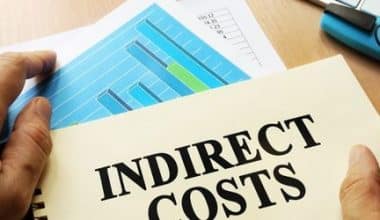B2B sales is a type of business sales that describes businesses that sell their goods and services primarily to other businesses rather than directly to consumers (B2C). It is also known as business-to-business sales Compared to B2C sales, B2B sales frequently have longer sales cycles, higher average order values, and more complex processes.
This article will define B2B sales and provide you with useful sales tactics you can use to address today’s sales challenges.
Business Sales
To raise capital for growth, businesses rely on growing sales and cutting expenses. Sales managers and directors employ a variety of strategies to raise a company’s sales revenue. There are numerous strategies for boosting business sales.
- Know your customers
- Use a variety of payment options
- Create a referral program
- Offer discounts and free shipping
- Monitor trends
- Create good contents
- Monitor with analytics
Small Business Sales
Gaining more sales and profits is a challenge for many small business owners. A business will quickly run out of money and have to shut down if there isn’t a steady stream of income. As a result, it’s imperative to continually consider how to boost sales, which could entail doing anything from coming up with fresh marketing ideas to broadening your reach.
Offering top-notch goods and services that satisfy customers’ needs is essential for growing sales. By consistently working to enhance your customers’ shopping experiences and draw in more customers, you can stand out from the competition.
- Create Value Bundles
- Build strategic alliances
- Budget for SEO
- Implement email marketing
- Establish a loyalty program.
- Track your progress with analytics.
Business Sales Online
There are numerous strategies you can use to boost your e-commerce company’s online sales, as well as numerous tools that promise to help you.
#1. Understand Who Your Target Market Is.
To find out who your current audience is, you can conduct market research. Make a comparison between your findings and the ideal client that your products and services are meant to appeal to. One method of boosting sales for your online business is by doing this.
#2. Identify Your Unique Selling Proposition
Make sure that your customers can easily understand and appreciate your unique selling proposition. This will assist you in persuading them to choose you over the competition and increase online sales for your company.
#3. Include CTAs on Your Website.
This can encourage clients to interact with your company and engage clients. A CTA button can be used to boost leads, boost conversion rates, or both.
#4. Display Customer Testimonials
Displaying customer feedback and endorsements on your website can increase consumer confidence in your goods and services and persuade potential clients to choose you. This is the most effective way to demonstrate social proof of your excellent service.
#4. Improve Your Customer Service
Because it can help you keep more customers and get more value from them, providing excellent customer service is crucial for your company’s ability to grow its sales.
#5. Offer Free Shipping on Orders
It’s possible that providing free shipping will increase your costs. Customers are embracing the fad because they understand the desire to avoid paying for shipping. So, ensure that your business draws customers away from competitors who charge for delivery by providing a free alternative.
#6. Act-On Customer Feedback
By focusing on the customer, this online sales strategy will help you increase your conversion rate. Gathering customer feedback will enable you to identify the concerns of your customers and even learn what features they would like you to provide to boost franchise business sales.
Franchise Business Sales
It takes more than just closing the deal to make sales from a franchise business. It involves determining the best fit for the candidate and the brand.
A franchise is a business arrangement between two legally separate parties (such as a company or venture) under which the franchisor grants the franchisee the right to operate its business or sell its products under the franchisor’s name in exchange for a fee that is typically paid annually. In franchising, partners receive permission to act as an agent for certain commercial activities.
Before investing in a franchise, potential buyers should carefully read the Franchise Disclosure Document, which franchisors are required to provide. This document includes details on franchise fees, costs, performance standards, and other important operational information. Franchises have several well-known benefits, including an easy-to-use business model, products and services that have already been tested on the market, and frequently, a well-established brand name. The drawbacks include high startup costs and ongoing royalties.
Business-to-Business Sales
B2B sales also referred to as business-to-business sales, describes businesses that sell their goods and services primarily to other businesses rather than directly to consumers (B2C). It speaks of the exchange of goods and services between businesses. Online and in-person B2B sales can both take place. B2B sales are frequently more complex than B2C sales, with higher order values and longer sales cycles.
Business-to-business (B2B) refers to a situation, relationship, or market where two business entities interact. Businesses that sell to other businesses are known as B2B companies. B2B sales is a type of sales or a sales model where a company sells its goods or services to another company.
B2B companies must maintain a team of highly-trained B2B sales professionals to increase revenue because B2B sales typically involve higher price points, more intricate processes, and numerous touchpoints across multiple channels.
However, B2B sales are challenging. It involves risky relationships over time as well as creative research. To succeed, they must impart knowledge, be charming, and engage people.
Types of B2B Sales
Four basic types of business-to-business sales exist.
#1. Producers
These are businesses that purchase supplies or services to produce goods. These companies manufacture their goods and market them to other companies or consumers directly. Eg Adidas
#2. Resellers
They offer customers the products and services that smaller companies produce. These products don’t undergo any substantial changes. The products that resellers carry are more widely known and accessible. Eg Amazon
#3. Government
All over the world, governments purchase goods and services to support their local populations. To support initiatives like public health, businesses collaborate with federal, state, and local governments. Eg Pfizer
#4. Institutions
Additionally, hospitals, nonprofit organizations, and charities require goods and services. Institutions occasionally have tighter budgets than other B2B clients. Nevertheless, because of the scope of their offerings, they are a significant source of sales, for example. Johnson & Johnson
B2B Sales Strategies
Your team’s sales tactics instruct them on how to position your goods to close deals. B2B sales techniques consist of
#1. Understand Your Audience
People are at the center of B2B sales. It’s possible that your company already has a wealth of information on your top clients, or you may need to conduct your independent research. Therefore, in addition to learning about who your customer is, you also need to know about their network and where they spend time online.
#2. Add Value
A B2B salesperson must produce value for clients that is simple to comprehend. This entails being aware of the issues your product addresses. In this case, you’ll figure out the main issue your client is facing and provide a targeted solution to address it. Being a spokesperson for your brand can also count as adding value. Your goal in this position should be to consistently communicate how your company can make your client’s lives easier.
#3. Complete the Sale.
The B2B sales team assists clients with important choices. They will do this while providing helpful resources, engaging in in-depth dialogue, and exchanging personal experiences. To close deals, sales teams need to establish trusting relationships. closing tactics typically include building trust
How to Create a B2B Sales Process
#1. Carry Out a Market Analysis
Start the B2B sales process by conducting in-depth market research to ascertain the level of demand for your offering at the moment. Learn who your competitors are in your market and how they operate to better understand the messages that they are delivering to their potential customers.
#2. Find Out Your Ideal Customer
Spend some time determining which businesses best suit your ideal clientele. Along with taking into account the products or services your prospects offer, keep an eye out for background data on the state of the industry.
#3. Draw a Map of the Purchasing Process
Now is the time to plan how the customer will acquire your offering. To achieve this, go through the steps a potential customer might take to access your product or service. The stages that prospective customers typically experience when making a purchase are as follows: The customer is aware of their issue or pain point. The purchaser determines a solution and investigates various goods or services that might be of assistance. The purchaser weighs the options and chooses what course of action to take.
You should be able to recognize and monitor your prospects’ progress through the sales process as part of your sales process. By doing this, you gain the ability to strategize and devise strategies that will enable you to engage them at their stage of the process.
#4. Qualify Leads.
Leads that are prepared for a direct sales pitch are known as sales-qualified leads. Not all people who express interest in your offering will develop into qualified leads. You can determine if a B2B prospect is sales-qualified by posing them inquiries like these: What problem are you trying to fix? Have you previously attempted to resolve this issue? If so, why did the earlier solutions fail? Who ultimately decides which products to buy?
#5. Meet Face-To-Face.
You can establish trust with the customer by meeting face-to-face (in person or via video) to respond to their inquiries, make your pitch, and address any issues. Building that relationship over the phone or through email is more difficult.
#6. Close the Deal.
The time has come to facilitate a contract outlining the terms of payment if the outcome is a sale. To ensure that onboarding and support are prepared for your customer, you may also want to coordinate with your company’s service department.
If the outcome isn’t a sale, thank the potential customer for their time and make the offer to stay in touch to assist them with any future needs. Sometimes a “no” is just a “not right now,” but you still learned something that will help you make more sales in the future.
#7. Track Your Results and Improve
High-performing sales teams monitor the outcomes of their operations constantly to make improvements. Your team and you can increase productivity and overall performance by routinely monitoring and working to enhance the outcomes of your company’s B2B sales metrics.
B2B Sales Tips
- Follow the content of your prospect.
- Sell the actual outcomes and results of your business.
- Your value proposition should be very clear.
- Meet decision-makers in person
- Look deep to find difficulties
- Control your emotions.
What Are the Types of Business Sales?
#1. B2B Sales
Business-to-business sales, also known as B2B sales, are transactions between two businesses.
#2. B2C Sales
Contrary to business-to-business transactions, business-to-consumer (B2C) sales involve exchanges between a seller and a single customer.
#3. Enterprise Sales
This type of sales sometimes referred to as complex sales, are a specific category of business-to-business sales that target big businesses. Enterprise sales involve significant risk. The majority of them involve drawn-out procedures that conclude with sizable revenue deals, challenging implementations, or multi-cycle complex contracts.
#4. SaaS Sales
Any type of software sold through a subscription model and hosted by a single provider or business is referred to as SaaS.
#5. Direct Sales
We’ll break down some of the most popular definitions and what specific terms should be used to define them since “direct sales” refers to a variety of sales types:
- Direct-to-consumer (DTC)
- Direct sales
- B2C sales
What Are Sales With Examples?
A sale is a deal involving two or more people where tangible or intangible goods, services, or assets are exchanged for cash. Eg A sale happens when the closing papers are signed, money is exchanged, and the new owner receives the key when someone buys their first house.
A sale is typically deemed complete when the agreed-upon payment for an item is provided by a buyer, accepted by a seller, and the item is delivered to the buyer.
What Are the 5 Methods of Selling?
#1. Solution Selling
When a salesperson initiates a conversation by outlining the advantages that a unique solution will provide the prospect, they are practicing solution selling. This approach recognizes that before the sales representative reaches out, prospects are knowledgeable and have done their research on the good or service.
#2. Inbound Selling
With this approach to selling, salespeople take on the role of consultants. To alleviate prospects’ pain points, they meet them where they are.
#3. Conceptual Selling
Salespeople who use the concept of selling discover how prospects perceive their products and try to comprehend how they make decisions.
#4. Consultative Selling
A common business-to-business sales strategy is consultative selling, which depends on the salesperson forging a bond with the potential customer. This strategy can take some time to establish, but if done well, it might result in ongoing sales as a result of the client’s confidence in the salesperson.
#5. SNAP Selling
SNAP selling is a strategy that fosters a relationship where the customer and the salesperson are on an equal footing and working toward the same objective. This strategy’s goal is to maintain the conversation’s focal point on the needs of the customer. Simple, priceless, always align, and priorities make up the acronym “SNAP.”
Conclusion
The development of a sales process that benefits your company, prospects, and overall objectives is crucial for B2B sales professionals. For small businesses to generate revenue and maintain a positive cash flow, their sales must increase. Remember, you can increase sales in multiple ways. Along with attracting new clients, you can concentrate on boosting the regularity, loyalty, and dollar amount of sales to current clients.
Business Sales
What is B2B Sales?
B2B sales also referred to as business-to-business sales, describes businesses that sell their goods and services primarily to other businesses rather than directly to consumers (B2C).
What are the Types of Business Sales?
- Direct Sales
- B2B Sales
- B2C Sales
- SaaS Sales
What are the Types of B2B Sales?
- Producers
- Government
- Resellers
- Institutions
Related Articles
- WHAT IS B2B MARKETING: Meaning, Examples, Types, and Strategies
- B2C MARKETING: Meaning, Example, and Strategies to Use
- CAVEAT EMPTOR: Meaning, Examples, and How to Reduce It
- Business-to-Business (B2B): How Does It work?
- B2C: What Is It, Difference & Advantages
- BUSINESS TO BUSINESS B2B: Definition, Examples & Benefits






